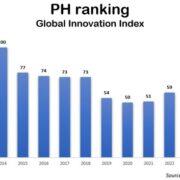Continuous global demand for Filipino medical workers along with the eventual rollout of the Covid-19 vaccines are projected as among the drivers of remittance inflows to the Philippines this year.
In a recent report from the Rizal Commercial Banking Corporation (RCBC) chief economist Michael Ricafort noted that economic recoveries of countries where there are overseas Filipino workers (OFWs) are also a plus since this will allow retrenched workers to regain their jobs.
“An offsetting factor is the fact that some OFWs work as front-liners especially in the health/medical sector and other essential industries, enabling some of them to continue working and sending remittances to the Philippines,” he said.
Data released by the Bangko Sentral ng Pilipinas (BSP) Thursday, January 14 showed a 0.3% year-on-year increase of cash remittances last November to USD2.379 billion.
As of the end of November 2020, cash remittances posted a 0.8% year-on-year contraction to USD27.013 billion—figures which authorities attribute to the impact of the pandemic.
BSP forecasts 2020 remittances to contract by 2% but to recover by around 4% for this year.
The government has reported that more than 300,000 OFWs have been repatriated since the start of the pandemic due to job losses.
Yet, as more countries gradually reopen their economies, Ricafort said this will allow workers to regain their jobs or provide opportunities for others.
This, especially since OFW deployment continues to diversify to areas that are not traditional host countries.
Ricafort said the Philippines is the biggest supplier of seafarers, at about 20-25% globally.
The Philippines is also among the biggest suppliers of nurses worldwide, at around 20% he said.
“Ageing population in some developed countries also structurally increased the demand for OFWs in recent years,” he added.





